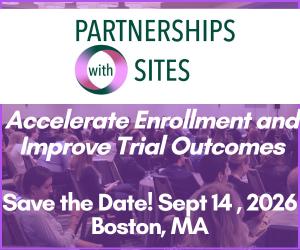Optimizing Trial-Matching for Patients
Anna DeSalvo, MS, CGC, finds the right trial for patients and shares how the industry can make matching patients and trials easier. Ms DeSalvo is Principal Clinical Trials Patient Navigator at Be The Match, operated by the National Marrow Donor Program.

Can you describe your work as a clinical trial matcher?
I work with our Clinical Trials Search and Support team within Be the Match. We help patients and families learn about clinical trials, and then find and join trials, if that’s something they’re interested in. Our scope is trials for people with blood cancers and blood disorders - any disease that can be treated by hematopoietic transplant. We will help those people find and join trials as best we can.
We can help them find any type of trial that they’re interested in. So that could be for a new drug or a pharmaceutical agent; it could be for transplant or another cellular therapy; it could also be “quality of life” trials, such as medication adherence, or pain management.
What does your trial matching look like?
Day to day, I work primarily with patients and family members, sometimes with healthcare providers, if they want help with a search or looking at what might be outside of their institution. I’m generally working over the phone and through email. Typically, they reach out with a specific question or if they’ve found out about clinical trials on their own.
I’ll do an intake with them, trying to collect as much information about their past medical history, their treatment, what they’re interested in, and how treatment has been going thus far for them. Then there are the logistic pieces, like their location and their insurance.
It can be difficult with how much a patient knows or doesn’t know about their treatment. Often, they’ll say, “I’ve had chemotherapy,” but don’t know which chemotherapy. That information is important in determining what trial they might be eligible for. Therefore, sometimes there’s back and forth with them and their doctor and me. But we’ll take whatever we can get and start the search there.
So you then take that information and use it to find a trial for them?
On ClinicalTrials.gov, I will sift through sometimes hundreds of trials to find which ones might be a good fit for that patient. I will then send the patient back a summary of the trials that I found with links, encourage them to talk with their doctor about them, and let them know that I can help them connect to the trial. If they want to move forward with that, I then reach out to the trial using the contact information that’s on ClinicalTrials.gov.
That’s another hiccup that we run into - the contact information is often not up to date. Often, unless I have an existing relationship with a person at the trial, it can take multiple emails and phone calls to get in touch with them or to get ahold of the right person.
When I reach out, I ask what the trial staff needs or wants in terms of connecting the patient with them. That looks different from site to site. Sometimes the patient needs to set up a consultation for a second opinion at that center.
Sometimes the trial staff wants me to help them collect certain records, so in those cases I’m helping the patient fill out a release of information form for their current institution to send the applicable records over. And sometimes it’s just introducing that trial staff to the patient via email.
How many patients are you generally working with to find the right trial for them?
The requirements of finding a trial really varies from patient to patient; some people just have a relatively quick question, or their doctor says that they should look into a specific drug, so those go pretty fast. While others call or email saying, I’m interested in learning what my options may be and have much broader searches and these cases can take months or sometimes even years.
I would say at any given time, I’m probably working with 10-15 patients who are coming at it from a more general, “I need to find a trial,” request and another 5-10 who have more specific requests. As I mentioned, the process of joining a trial can take months, which can be an issue for time-sensitive patients. Having these patients learn about clinical trials as a treatment option as early as possible is crucial because as soon as time is a limiting component, it gets really hard.
"When searching for trials, it would be really helpful to be able to filter on additional components like previous treatments, types of therapies and basic eligibility criteria in a more systematic way. There’s so much free text that you can’t filter on, so in the current state you have to go through the trials manually and read through each posting."
What would make a difference in reducing the burden of your work?
When searching for trials, it would be really helpful to be able to filter on additional components like previous treatments, types of therapies and basic eligibility criteria in a more systematic way. There’s so much free text that you can’t filter on, so in the current state you have to go through the trials manually and read through each posting. In terms of gathering the patient information, it would be helpful if there was some sort of portal that the patient, their home doctor, the trial staff and the navigator (me) could have access to.
The patient could release their records through this portal (with the correct privacy settings, of course) and we would all be able to communicate in one place with a clear paper trail. It’s kind of like getting everyone at the same table instead of having the same conversation multiple times.
Can you expand on what “free text” is and how that could be rectified?
The National Library of Medicine is actually doing some modernization work on ClinicalTrials.gov right now, and they had a request for information (RFI) out earlier this year that we participated in. During the readout of the RFI’s, there was a lot of talk about the balance between standards and flexibility in how the trials submit their information.
Currently, there are a lot of pieces of the trial description that submitters type in an open field, so they can write whatever they’d like. A more standardized format would allow people to filter on or search the trials knowing that it’s written the same way in each description. For instance, if I have a patient who has atrial fibrillation (a-fib), there are likely trials that are automatically going to count that person out due to the exclusion criteria. Right now, I have to go into every trial and read whether that’s going to be an exclusion for them or not. If every trial entered their exclusion criteria for a-fib in the same way, there could be a filter I could click saying don’t show me any trials that a-fib is an exclusion criterion, and I’ll have a much shorter list of more accurate trial options.
"Something that would make a difference: all patients are told about clinical trials as a treatment option early in their treatment journey."
You also do the writing for translating the trials into lay language for the website. Have you learned anything from that process?
The more writing I’ve done of the trials, the more I realized there are only a handful of different patterns that you see, but the language that they’re written in can be very confusing. There are also times where in the study description on ClinicalTrials.gov, it says one thing, and then in the arms and interventions or eligibility criteria sections, it says another thing. My guess is that at one point they probably updated one and then forgot to update the other one, but you’re left wondering which one is true.
If you could pick 1-2 things that would reduce the amount of time it takes to navigate through these vast lists of trials, what comes to mind?
One that I’ve already mentioned is trying to avoid free text as much as possible so that things can be searched in a more streamlined way and are more uniform.
The second, that I’ve also already mentioned, is the accuracy of the information provided on ClinicalTrials. gov both in the trial description and the contact information. The website might say a site is recruiting so you reach out to them and when you finally get a hold of someone, they say the site isn’t actually recruiting anymore.
What would you like to see happen in the next few years to optimize clinical trial matching?
I’m part of an American Cancer Society Cancer Action Network working group looking at overcoming barriers to clinical trial enrollment, so a lot of these ideas come from that group, for example, making the information on the backend of ClinicalTrials.gov more standardized and searchable and creating a way to make this process less manual.
Another thing they’re working on is what they’re calling The Integrated Trial Matching Project. It’s a way to share select data points that are important for clinical trial matching with matching services using existing tools in the EHR and patient data management systems.
In general, something that would make a difference would be that all patients are told about clinical trials as a treatment option early on in their treatment journey, not when they’ve exhausted all of their options and not by accident because they happen to Google something or hear about it from a friend.
This also gets at improving diversity in clinical trials – in the current state, certain people are told about trials and certain people are not. All patients should be presented with the idea of clinical trials and centers should screen all patients. Hopefully some of these newer tools will make it easier to do this.
For more information on CRAACO: Clinical Research as a Care Option, visit CRAACOevent.com.







